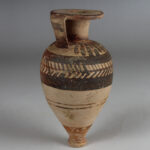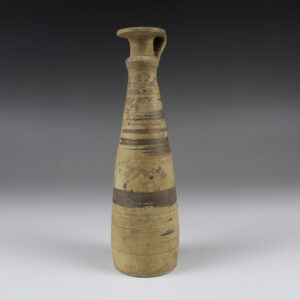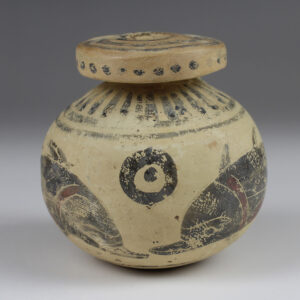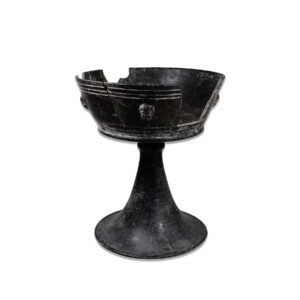Description
| ITEM | Piriform aryballos with bands decoration |
| MATERIAL | Pottery |
| CULTURE | Greek, Proto-Corinthian |
| PERIOD | 7th – 6th Century B.C |
| DIMENSIONS | 106 mm x 54 mm |
| CONDITION | Good condition |
| PROVENANCE | Ex Museum Exhibiton of the Arbeitsgruppe für Biblische Archäologie, Germany (Deaccession) |
The aryballos (pl. aryballoi) has a small round or ovoid body and a narrow neck. The typically broad and flat lip prevents spillage. The use of the Greek term aryballos for this particular shape is a modern convention. It may well have been used in antiquity, but we know that other names, such as lekythos, were also applied.
Aryballoi are common in Corinthian ware, some being tiny and meticulously decorated. Examples are less widespread in Athenian, although the shape is depicted on vases or funerary stelai, either hanging up, often with a strigil or sponge in an athletic setting, or being used by the athletes themselves.
In Corinth and East Greece, warrior’s heads, animals, and other mould-made figures could serve as the body of aryballoi. Athenian potters sustain the habit, and there are examples in the form of female heads, shells, even genitals.











